Search the Special Collections and Archives Portal
Search Results
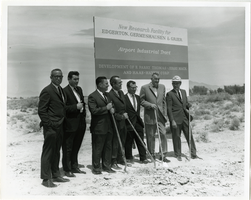
Photograph of Mayor Oran K. Gragson attending the groundbreaking for a new research facility for EG&G, May, 1963
Date
Archival Collection
Description
Image
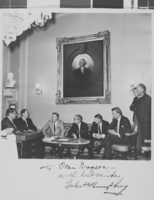
Photograph of eight men seated under a portrait of George Washington, 1967
Date
Archival Collection
Description
Image
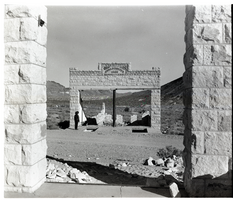
Film transparency of the ruins of the H. D. and L. D. Porter Brothers Store, Rhyolite, Nevada, November 25, 1948
Date
Archival Collection
Description
Image
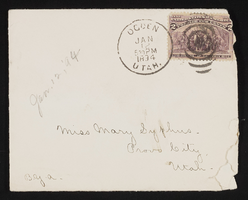
Letter and envelope from Aggie Herrick, Ogden, Utah to Mary Etta Syphus, Provo, Utah
Date
Archival Collection
Description
From the Syphus-Bunker Papers (MS-00169). The folder contains an original handwritten letter, an envelope, a typed transcription of the same letter, and a copy of original letter attached.
Text

Letter and envelope from Mary Etta Syphus, Panaca, Nevada to John M. Bunker, Bunkerville, Nevada
Date
Archival Collection
Description
From the Syphus-Bunker Papers (MS-00169). The folder contains an original handwritten letter, an envelope, a typed transcription of the same letter, and a copy of original letter attached.
Text
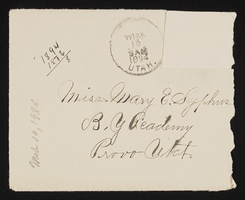
Letter and envelope from John M. Bunker, Logan City, Utah to Mary Etta Syphus, Provo, Utah
Date
Archival Collection
Description
From the Syphus-Bunker Papers (MS-00169). The folder contains an original handwritten letter, a typed transcription of the same letter, the original envelope with the stamp removed, and a copy of the original letter.
Text
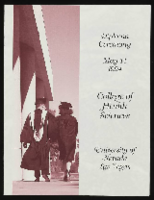
University of Nevada, Las Vegas (UNLV) College of Health Sciences Diploma Ceremony program
Date
Archival Collection
Description
Commencement program from University of Nevada, Las Vegas Commencement Programs and Graduation Lists (UA-00115).
Text

The Boulder Dam Las Vegas Rotary Club newsletter, probably 1926
Date
Archival Collection
Description
Text

The Boulder Dam Las Vegas Rotary Club newsletter, August 19, 1926
Date
Archival Collection
Description
Text

The Boulder Dam Las Vegas Rotary Club newsletter, April 29, 1926
Date
Archival Collection
Description
Text
